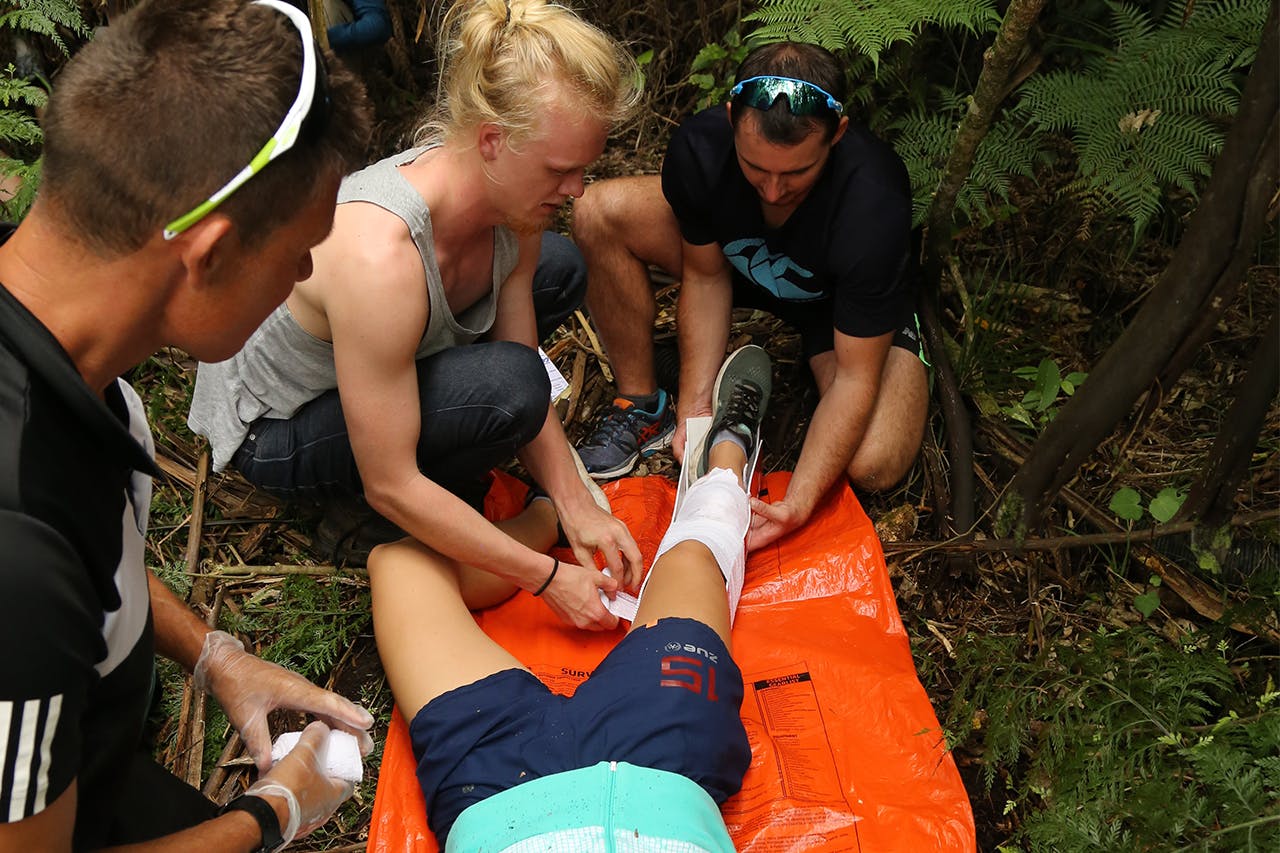You have been tramping when you fall and hurt your ankle. What should you do now?
An ankle injury on the trail can make walking difficult and there’s no one rule for how to react.
When an incident does happen though, STOP – Stop, Think, Observe and Plan. This should be a quick process if you’re in a dangerous spot. Once out of danger, put on warm clothes, have a cup of tea or a bite to eat while you think, observe and plan again.
Here are some things to think about.
What is the injury like?
Look for signs the injury may require urgent attention, such as a loss of circulation. Consider what happened; the urgency and options are affected if the injury occurred due to other medical conditions or if there were other injuries such as a concussion.
Strapping the ankle, or using a compression bandage, may provide enough support to allow you to walk, but if you can’t stand and move on the injured foot, you won’t be walking out. Consider if walking on it will cause more damage and worsen the injury. Resting overnight and waiting to see how it is the next day can make a world of difference to your decision. The ankle may be greatly improved or may have stiffened up. If it has stiffened, it may ease with movement.
Where you are
If the ankle allows movement, you are not too far from the trailhead and the terrain is not too challenging, you might be able to walk out. Consider what will happen if you attempt to walk out but are not successful. It may be better not to go if, when the attempt is abandoned, you end up in greater danger, or rescue will be more difficult.
If there is a hut or shelter closer than the road end, it may be better to head there, where it will be warm and dry, while you rest the injury or await help.
When it happens
If it is near the end of the day, consider how much light is remaining, your speed of travel while injured and if you have the ability to camp.
People power
Your options are increased if you are in a group. Others may be able to carry all or some of your gear. Someone might be able to support you or help you over difficult terrain.
Your own physical and emotional abilities will affect the options. If you are unfit or have other medical conditions, your ability to walk out may be affected. Remember, it may take longer to walk with the injury and you may already be tired from the exertions of the walk prior to the fall.
Being ‘tough’ and determined to walk out may lead to a bad decision being made in terms of safety or long-term recovery.
Communication options
If you don’t have the ability to communicate, your options are: waiting for someone else or sending a party member for help. If you can’t walk out or be supported out, the PLB can be activated even though the situation isn’t life-threatening. Two-way communication systems allow you to explain the situation and the Rescue Coordination Centre to advise approximately when and how help will arrive.
Weather and other conditions
Bad weather means you’ll have to consider your safety while awaiting rescue. You’ll need to find your way to a hut or shelter or make your own shelter. An injured ankle is a problem but add hypothermia and it becomes life-threatening.
Helicopter rescue may be impossible so you may need to wait for a ground party to arrive.
Priorities
Don’t get yourself or others into a more dangerous situation. Preserve the injury, don’t make it worse. Self-rescue is an option only if it can be done safely.
– Heather Grady is an instructor with Outdoor Training New Zealand








